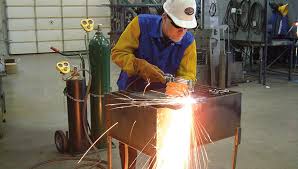Calibration, MCT testing & Gas Safety
Ensuring your welding machine is properly calibrated is crucial for achieving high-quality welds and maintaining a safe working environment. Let's delve into the calibration process and its significance.
Why Is Calibration Important?
Regular calibration of welding equipment offers several benefits:
Ensures Accuracy: Proper calibration aligns the machine's output with specified parameters, leading to consistent and precise welds.
Enhances Safety: Accurately calibrated machines reduce the risk of accidents associated with incorrect settings.
Maintains Compliance: Adherence to industry standards often requires regular calibration, ensuring your operations meet necessary guidelines.
Ensuring the electrical safety of welding equipment is paramount for both operator safety and equipment longevity. Machine Compliance Tests (MCTs), guided by the IEC 60974-4 standard, play a crucial role in this process.
Understanding IEC 60974-4
IEC 60974-4:2016 specifies test procedures for periodic inspection and post-repair assessments to ensure the electrical safety of arc welding equipment. This standard applies to power sources designed in accordance with IEC 60974-1 or IEC 60974-6, as well as standalone ancillary equipment.
It's important to note that this standard is not applicable to new power sources or engine-driven power sources.
Ensuring gas safety in welding operations is not just a regulatory requirement; it's a fundamental aspect of protecting your team and maintaining operational efficiency.
Let's delve into essential gas safety procedures for welding machine operators and explore why conducting regular gas safety checks is vital for your company.
Why Your Company Should Conduct Regular Gas Safety Checks
Employee Safety:
Regular gas safety checks significantly reduce the risk of accidents, such as gas leaks or explosions, ensuring a safer workplace for all employees.
Regulatory Compliance:
Adhering to safety regulations and standards is not only a legal obligation but also protects the company from potential fines and legal issues.
Operational Efficiency:
Well-maintained equipment operates more efficiently and has a longer lifespan, leading to cost savings and uninterrupted workflow.
Reputation Management:
Demonstrating a commitment to safety enhances your company's reputation among clients, partners, and employees, fostering trust and reliability.
Incorporating these gas safety procedures and conducting regular safety checks are proactive steps toward creating a secure and efficient working environment. Prioritizing safety not only safeguards your team but also contributes to the overall success and sustainability of your operations.
Gas equipment tests fall into two categories - CP7 and CP47
A CP7 gas inspection, mandated by the BCGA Code of Practice 7, ensures the safe use of oxy-fuel gas equipment, including regulators, flashback arrestors, hoses, and blowpipes, through annual visual and functional checks and equipment replacement every five years.
A CP47 gas inspection, based on the British Compressed Gases Association (BCGA) Code of Practice 47, is a thorough safety check of portable or mobile single cylinder gas supply equipment, ensuring safe operation and compliance with regulations.
Whatever your gas equipment testing requirements are, we are able to help.

